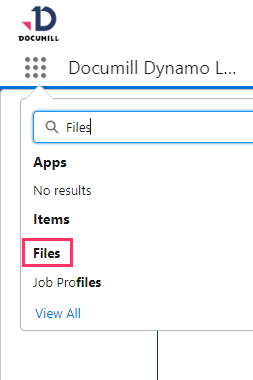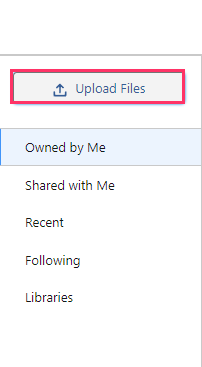Deploying to a Different Environment
It is straight forward to move your Documill Dynamo template templates from one organization to another. However, users tend to face errors or the templates don't work in Production as they did in Sandbox. The most common problem that causes errors in the templates after deploying in Production is having different data structure between the two organizations or some part of the template still contains the old information taken from Sandbox. Follow the checklist below to avoid the errors.
Before moving template to Production
1. Ensure the similarity in the data structure
Make sure that the Sandbox and Production (or the old and the new organization) have the same data model. If any changes have been made in your Sandbox before or during the creation of the template, update your Production org first.
In case the Sandbox is very different from the Production due to an under development project or different testing purposes, the Production org needs to have at least all the fields used in the templates, such as
Fields in the template layout to get dynamic data from the CRM into the documents. For example: Heading of the document = "1.
<Account.Name>"Fields used as conditions to trigger the change of the content in the documents. For example: Hide the discount column in pricing table when the field
<Hide_discount__c>in Salesforce is checkedFields used in the template's logic or setting. For example: When end-user select the "Save" button, upload the outcome document in Salesforce with name "Offer for
<Account.Name>_ Offer ID<Opportunity.Offer_ID__c>"Fields and record types which are used in the Custom Buttons and Links or the Visualforce Page
If custom fields are used in the template, make sure those fields have the same API name in Sandbox and Production
2. Check the Attachments or Imported documents
If any templates have attachments or imported documents, make sure to have those available in the Production org as well. In the template, it can be indicated which files from Salesforce to be attached, by pointing at either the file's Title or Content Document ID. As the IDs are different in Sandbox and Production, they will need to be updated in the template with the correct ID. Updating IDs can be done after moving the template to Production. It's good to have an overview of wherein the templates those IDs are used before the move and prepare the Production org accordingly.
Content Document ID: The correct Content Document IDs in the template's tags needs to be changed.
Content Title: If the file's Title is used in the template, make sure all the files in Production have the exact Title
Library ID: If all the attachments are in a specific Salesforce Library, they need to be updated in the template with the Library ID in Production
3. Ensure users have the right permissions
End-users will need certain permission in Salesforce in order to use Dynamo. Make sure all the permissions are set up properly for end-users when preparing your Production org.
API Enabled: How to enable API in Salesforce
Pre-authorize Dynamo in Connected Apps (for using Dynamo with Lightning Experience)
Visibility of those fields used in the templates.
Access at least as Viewer to the Libraries or Chatter Groups those contain the attachment and template files. How to manage Dynamo template files in Salesforce
Access at least as Author to the Libraries or Chatter Groups those will store the outcome documents or have the permission to Upload Files into the record.
Steps for deployment to another environment
1. MS Office template
Open the template from sandbox (in Office, use Dynamo’s Open button)
In Dynamo Office add-in, in Dynamo ribbon, click Document
Click Show Embedded Info
From the drop-down, select Remove Repository Information and click Remove (this removes the template’s connection to the sandbox)
In the Confirm pop-up, click Yes
Click Close, and OK to close all the pop-up windows
Change your account to production from Account button
Use Dynamo’s Save As to save the template in production
2. Online template
Download the Dynamo template that needs to be deployed to another environment. This can be done in two ways, from the template builder, or, from Salesforce.
From the template builder: Open the desired template and click on Export

Next, click on the Download button

A copy of the template will now be saved to the device.
From Salesforce: Log into the Salesforce environment where the template is located, and access Files

From the Salesforce Files, locate the desired Documill Dynamo template. Documill Dynamo templates are files with the .dap extension.
Once the template file is located, expand the drop-down menu and click on Download

A copy of the template will now be saved to the device.
Now that the template is saved to the device, log into the Salesforce environment to which you wish to deploy the template.
Navigate to the Salesforce files, and select a file library in which the template is to be stored in, if necessary.
From here, click on Add Files.
In the next step, select Upload Files and select the template which was saved to your device

Once the file is added, the template will be accessible in the new environment.
The Getting Started guide can be consulted if more information on how to configure the template in the new Environment is needed.
